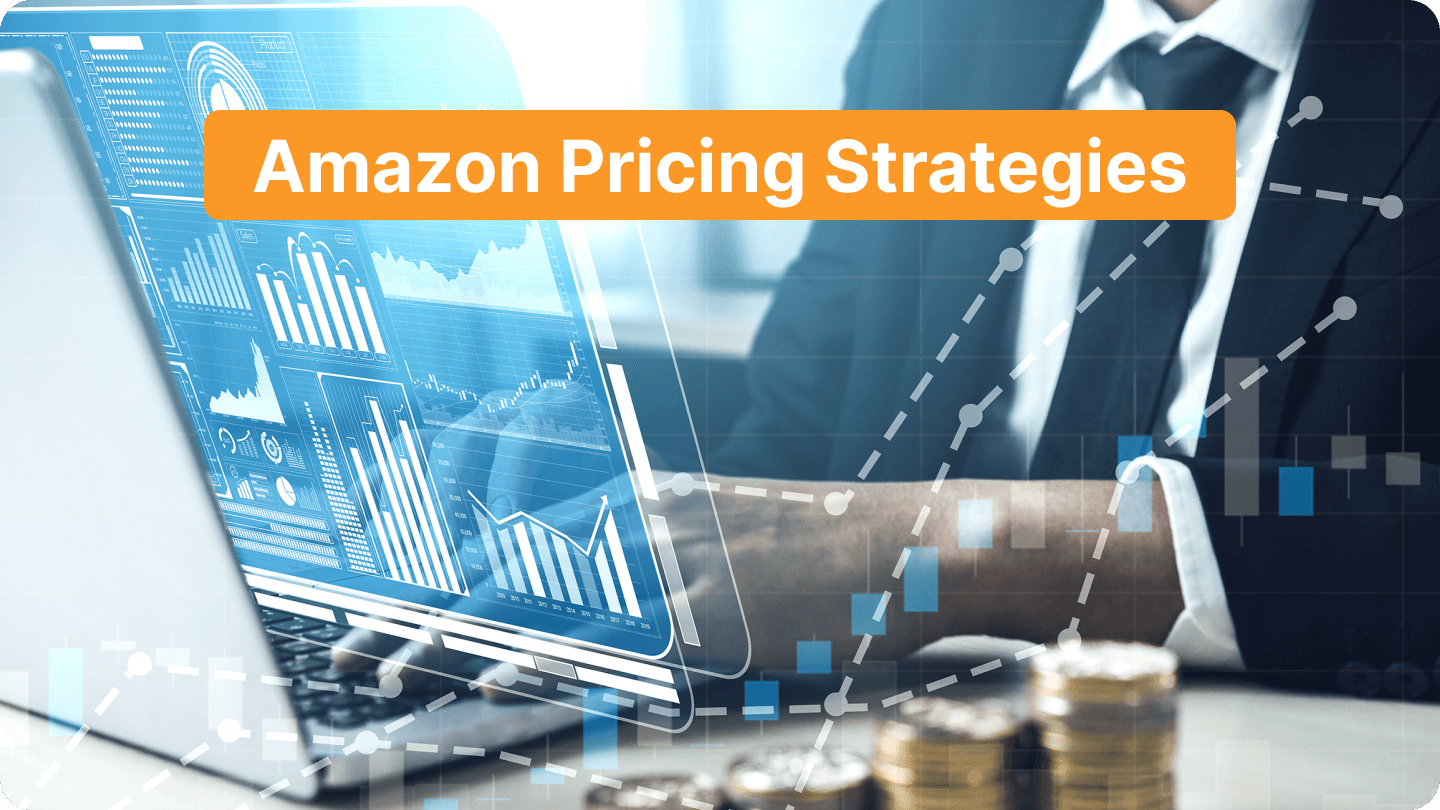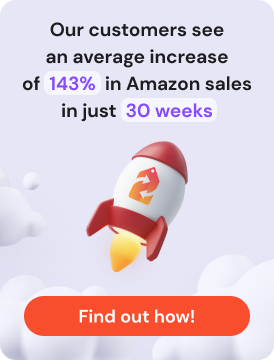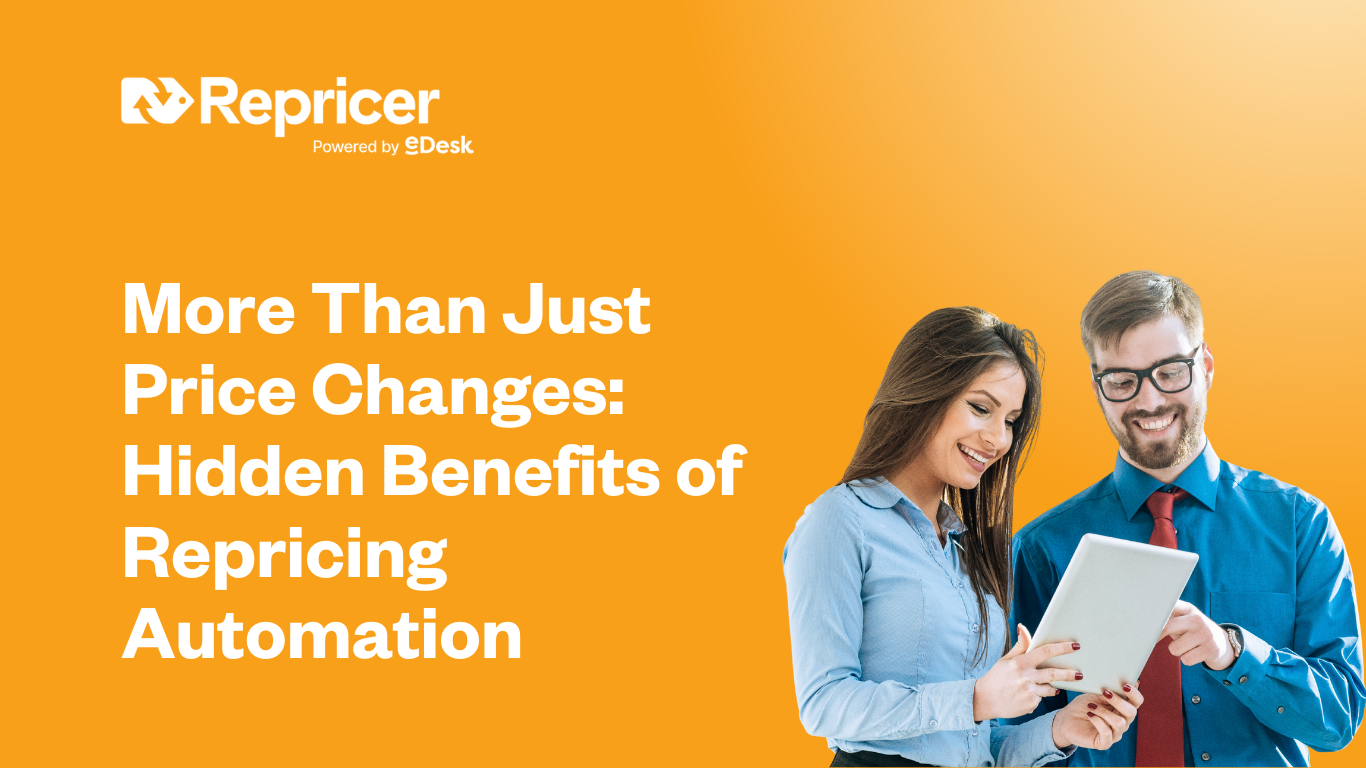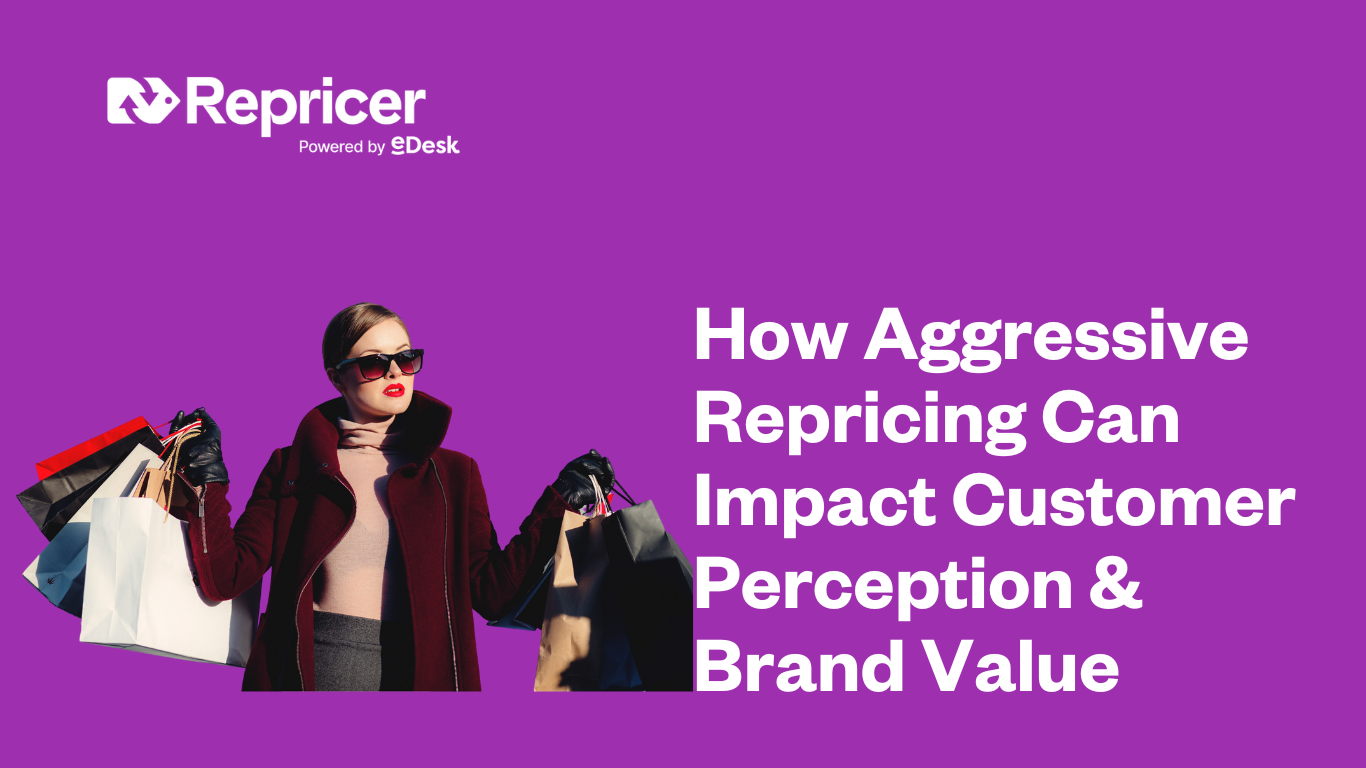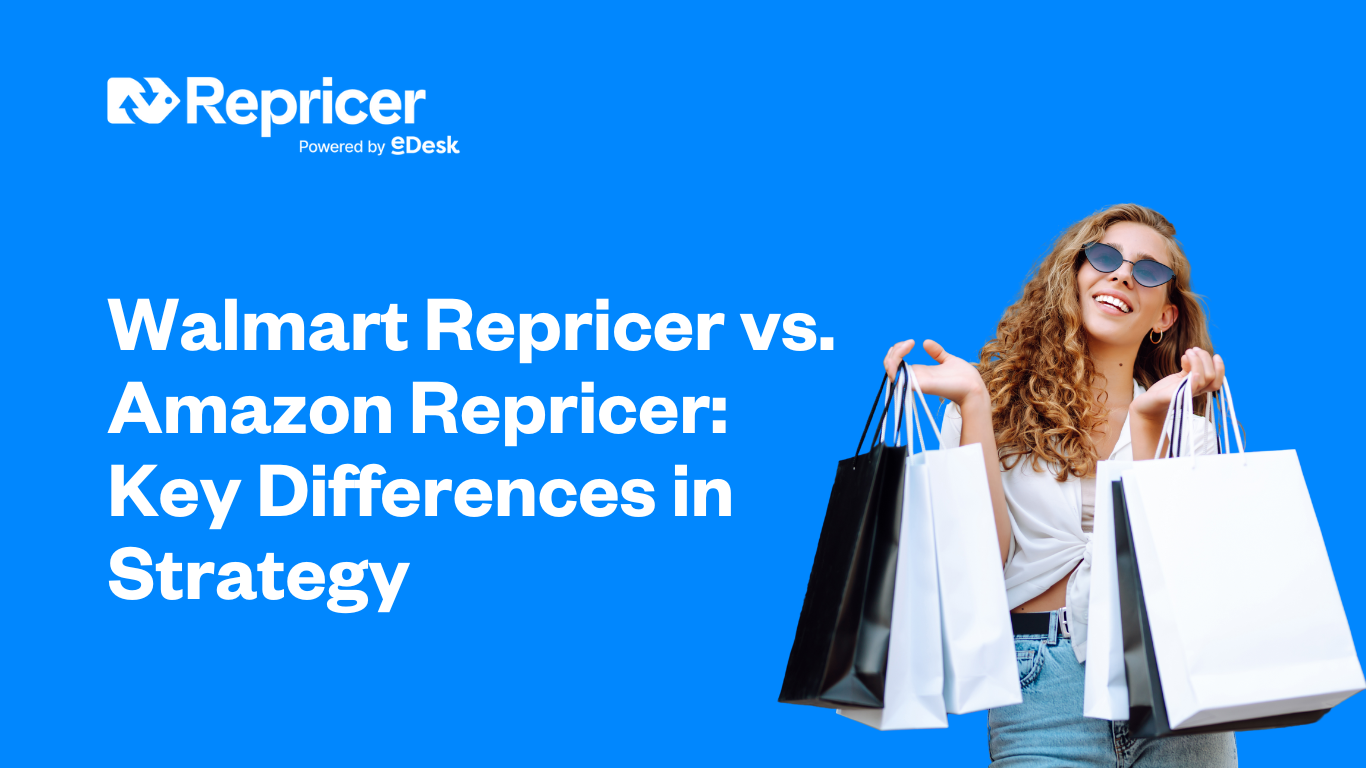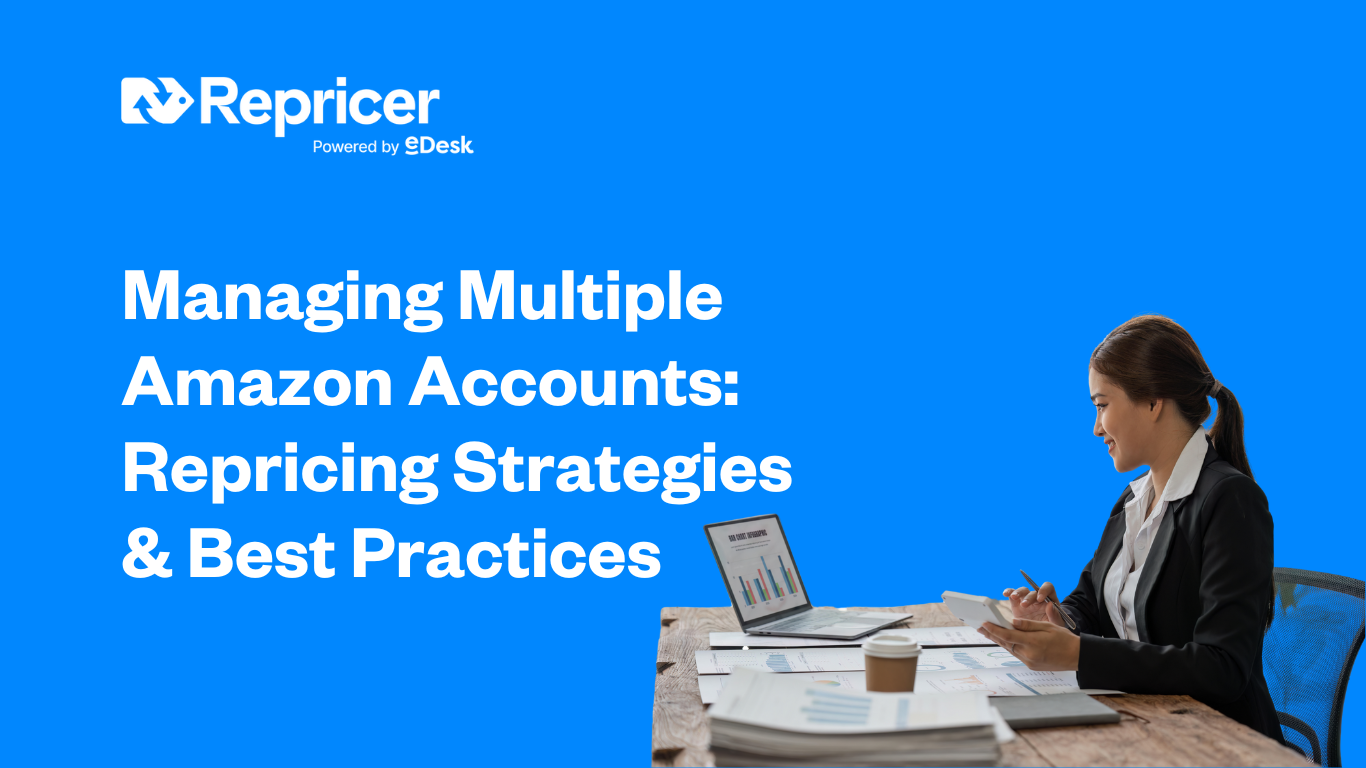Tanto si eres nuevo como si estás más curtido en la venta en Amazon, hay muchas cosas que debes tener en cuenta a la hora de dirigir y hacer crecer tu negocio para que sea rentable. Las cosas obvias que vienen a la mente incluyen la configuración de tu tienda, la creación de un inventario adecuado, el uso de imágenes de alta calidad y la optimización de las descripciones de tus productos para SEO.
Pero un elemento de la gestión de una tienda Amazon de éxito que no es tan obvio, pero que es crucial, ¡es el precio!
La fijación de precios es un elemento que a menudo se pasa por alto para convertirse en un vendedor de éxito en Amazon. Es algo que todo aquel que quiera hacer crecer su negocio debería conocer y cómo influye en El algoritmo de Amazonque, en última instancia, determina la visibilidad de tus productos y tu posición frente a la competencia.
Así que vamos a sumergirnos en la fijación de precios en Amazon, cómo funciona el algoritmo de Amazon en relación con los precios, y qué puedes hacer para optimizar tu estrategia de precios como vendedor para ayudar a que tu negocio funcione de forma óptima en Amazon.
¿Cómo funciona la fijación de precios en Amazon?
La forma en que un vendedor pone precio a sus productos en Amazon es competitiva. Siempre quieres estar en el mismo nivel de precios (o, idealmente, ligeramente por debajo) que tu competencia directa, para que los compradores elijan tu producto en lugar de otro similar.
Pero no se trata sólo de rebajar a la competencia. Aunque los vendedores siempre quieren tener los artículos con los precios más competitivos (porque son los que harán que los clientes se decidan a comprar), los artículos bien valorados también tienen más probabilidades de ganar el premio de la competencia. muy codiciada Buy Box de Amazon.
Dicho esto, la fijación de precios en Amazon es un poco diferente que en una tienda tradicional, ya que Amazon utiliza un algoritmo para dar prioridad a los productos de los vendedores que se ven y promocionan en la plataforma. Así que reducir simplemente tus precios no significa que salgas ganando frente a tus competidores.
También debes tener en cuenta que la fijación de precios en Amazon no sólo incluye el precio de cada producto vendido. También están los gastos de envío, los descuentos o cupones/vales y cualquier garantía de precio bajo.
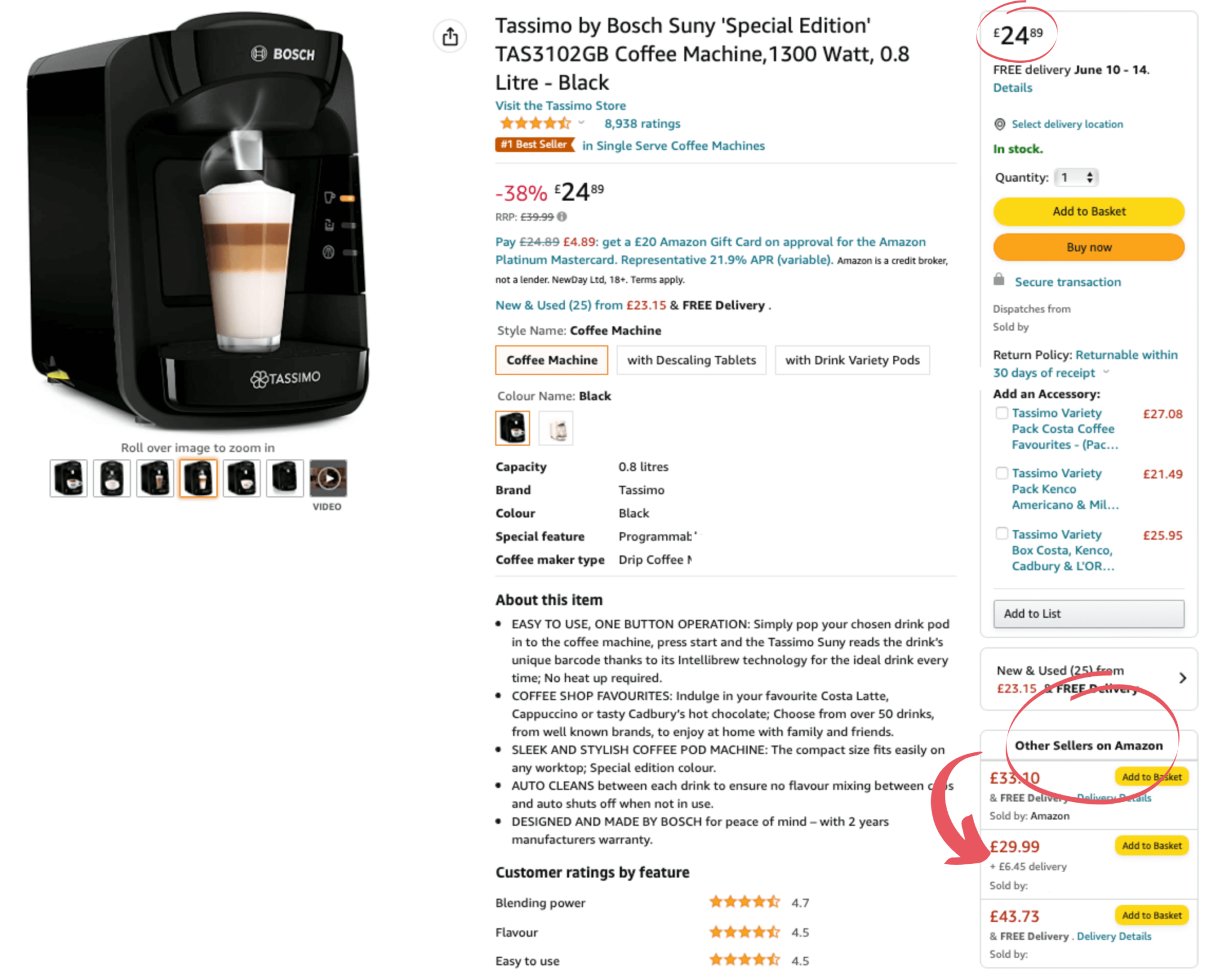
Estos artículos forman parte de lo que se conoce como «precio total» en Amazon. Y eso es lo que informa al algoritmo y puede afectar a tu posición en la Caja de la Compra o en la sección «Otros vendedores en Amazon». Como puedes ver, hay múltiples factores que intervienen en la fijación de precios de los productos en Amazon.
Los precios competitivos ganan en Amazon
Para ganar la Buy Box intervienen varios factores. Amazon no concederá simplemente la Buy Box al vendedor con los precios más bajos. Aunque se da cierta prioridad a los vendedores que mantienen sus precios bajos para los compradores, hay otros factores en juego.
Estos otros factores incluyen recompensar a los vendedores que ofrecen el mejor servicio y mantienen una buena reputación. El objetivo en la plataforma Amazon es combinar la reputación (en forma de opiniones favorables de los clientes) con un precio competitivo (que incluye no sólo el precio del artículo, sino también el envío) para ganar la Buy Box.
Hay varias estrategias principales para fijar precios en Amazon:
- Economía: Esta estrategia se consigue mediante el uso de pequeños márgenes de beneficio, lo que significa que tu producto está abierto a un gran mercado. Normalmente, los productos que se venden con esta estrategia son productos sin marca, como artículos de uso cotidiano, que se ofrecen a precios bajos y sin gastos de envío. Los productos económicos no suelen salir nunca a la venta porque no lo necesitan; su finalidad es ser accesibles, baratos y útiles.
- Premium: Esta estrategia es la inversa de la estrategia Económica. Aprovecha los productos de marca para llegar a los compradores, y como los productos de marca suelen tener un precio más elevado, la estrategia Premium utiliza descuentos u ofertas especiales para generar interés en el consumidor.
- Descremado: Esta estrategia es un poco de prueba de mercado. Suele empezar con un precio más alto y luego lo baja utilizando las ventas cuando los competidores empiezan a ofrecer productos similares a precios más bajos. Las marcas de electrónica suelen recurrir a esta estrategia.
- Penetración: Esta estrategia capta una gran franja del mercado lanzando nuevos productos a precios más bajos que los competidores. Esto se hace mediante técnicas de marketing innovadoras que ofrecen precios de venta especiales y por tiempo limitado en los artículos. Los precios subirán una vez alcanzados los objetivos de ventas iniciales, ya que fijar precios más bajos es insostenible a largo plazo.
Hay muchas formas de poner precio a los productos, y todas estas estrategias influirán en el algoritmo de Amazon y en cómo aparecen tus productos. En última instancia, ninguna de estas estrategias es estática, y como vendedor, siempre tendrás que estar revisando tus estrategias de precios y ajustándolas, sobre todo porque los precios del mercado en general no permanecen invariables.
Dadas las fluctuaciones del mercado y los cambios de precios en una semana determinada, esto significa que los precios pueden cambiar continuamente. Y ahí es donde entra en juego la revalorización. Los vendedores de Amazon tienen que reajustar los precios de sus artículos continuamente para seguir siendo competitivos, adelantarse al mercado y asegurarse de que otros no les superan.
Bajada de precios en Amazon
Es importante tener en cuenta que el algoritmo de Amazon reconoce los cambios en los precios, tanto en lo que respecta al precio del artículo como en precio de envío. Si un vendedor cambia el precio de su producto o modifica el importe que cobra por el envío, Amazon lo recogerá y lo incorporará automáticamente a la clasificación de productos en la plataforma.
Por eso es esencial estar al tanto de los precios de la competencia. Los precios son dinámicos e influyen en el algoritmo también de forma dinámica, por lo que siempre debes estar al tanto de lo que ocurre con las bajadas de precios de los competidores y de cómo puede afectar a tu clasificación.
¿Qué es la revisión de precios?

La revisión de precios es una estrategia en la que te aseguras de que tus precios son competitivos con los de otros vendedores sin reducir tus márgenes de beneficio.
Cuando vendas en Amazon, mantener tus precios competitivos te ayudará a conseguir una mejor posición en el mercado y a trabajar para ganar la codiciada Buy Box. Esto puede significar bajar tu precio en tan sólo 0,01€ respecto a tu competencia.
Por eso es tan importante la revisión de precios. Los precios fluctúan constantemente, por lo que los vendedores tienen que estar al tanto de los cambios del mercado y responder en consecuencia, lo que significa cambiar el precio de los productos con regularidad.
Los vendedores pueden cambiar los precios manualmente, entrando y modificando los precios de sus artículos uno por uno a través de Amazon Seller Central. Pero esto puede llevar mucho tiempo y resultar pesado, aunque te permite conocer el mercado y los precios de la competencia.
Aun así, la retarificación manual no es una solución a largo plazo, sobre todo si quieres hacer crecer tu tienda. Ahí es donde entra en juego el software de redeterminación de precios de Amazon. Los programas de fijación de precios como Repricer actualizará automáticamente tu catálogo de productos con los precios más competitivos.
El software de fijación de precios es fantástico porque actualiza los precios dinámicamente en función de lo que ocurre en el mercado. Así se evitan las conjeturas de controlar y actualizar constantemente tus productos uno por uno.
Con el software de reajuste de precios, los Vendedores pueden establecer reglas para no superar un suelo específico o fijar otros parámetros, como el precio mínimo, para garantizar que nunca se pierdan márgenes.
Cómo funciona en la práctica el software de retarificación
Aquí tienes un resumen de cómo funciona el software de retarificación en pocas palabras:
Un competidor cambia sus precios en Amazon. Este cambio es señalado por el software de retarificación, que calcula un nuevo precio y lo actualiza en Amazon.
Como puedes ver, el proceso es dinámico, se produce en tiempo real y facilita que los vendedores se aseguren continuamente de que sus precios siguen siendo competitivos.
Hay dos tipos de retarificación: la retarificación basada en reglas y la retarificación algorítmica.
He aquí en qué se diferencian:
Reprecios basados en reglas
Aquí es donde el vendedor establece los parámetros para el cambio de precio. Por ejemplo, puedes establecer una regla para cambiar automáticamente el precio de un competidor concreto en 0,01 ¤ por producto.
Con la revalorización basada en reglas, sigue estando dirigida por el software, pero hay muchas reglas que puedes establecer manualmente para optimizar el funcionamiento del software, lo que te da el control sobre cómo ejecutas la revalorización.
La revalorización basada en reglas podría ser la solución ideal para aquellos a los que les gusta hacer las cosas manualmente y seguir de cerca los movimientos del mercado. En Repricer, hemos reunido algunas reglas flexibles que puedes seguir para simplificar la retarificación manual, con un montón de opciones útiles orientadas a aumentar tus ventas.
Reprecios algorítmicos
Este método es más avanzado, ya que utiliza una herramienta basada en algoritmos que tiene en cuenta numerosas métricas para calcular cuál es el mejor precio para tu producto y que proporcionará el mejor ROI para tu negocio.
Esta es la forma más sofisticada de retarificación, y es la que utilizan los vendedores profesionales con un amplio catálogo de artículos. Si tienes muchos artículos que se mueven con rapidez y quieres ampliar y hacer crecer aún más tu negocio, el reprecio algorítmico será tu mejor opción.
También se mantiene constantemente al tanto de los cambios del algoritmo de Amazon, «aprendiendo» sus nuevos cambios, asegurando que tu estrategia de retarificación esté siempre alineada con lo último del algoritmo de Amazon.
¿Por qué debo utilizar un software de retarificación?
La respuesta corta es que si quieres tener éxito vendiendo en Amazon, el software de retarificación es imprescindible. Según un informelos vendedores de Amazon que utilizaron un repricer para automatizar la fijación de precios experimentaron un aumento del 145% en las ventas semanales a lo largo de 30 semanas.
Para las empresas que quieren escalar, no es práctico (ni siquiera posible) gestionar manualmente la fijación de precios a largo plazo. Aunque la fijación manual de precios puede ser útil para que las empresas más pequeñas comprendan las tendencias de precios, una vez que las empresas crecen y su catálogo de productos aumenta, es insostenible seguir fijando precios manualmente.
El software de reajuste de precios es una herramienta excelente para subir el nivel de tu tienda Amazon, seguir siendo competitivo y ganar la Buy Box. Ajustará los precios automáticamente, puede gestionar grandes catálogos de productos y maximizar tu ROI.
Aunque tiene un precio, merece la pena si comparas el coste del software de fijación de precios con el aumento de beneficios que obtendrás al tener precios más competitivos y ganar potencialmente la Buy Box de Amazon.
Más información sobre la caja de compra de Amazon
Mencionamos mucho la Buy Box de Amazon, ya que es, en cierto modo, el santo grial de los vendedores de Amazon. Pero, ¿qué es exactamente? Bueno, es la casilla que aparece en la página de un producto individual cuando un comprador busca un artículo.
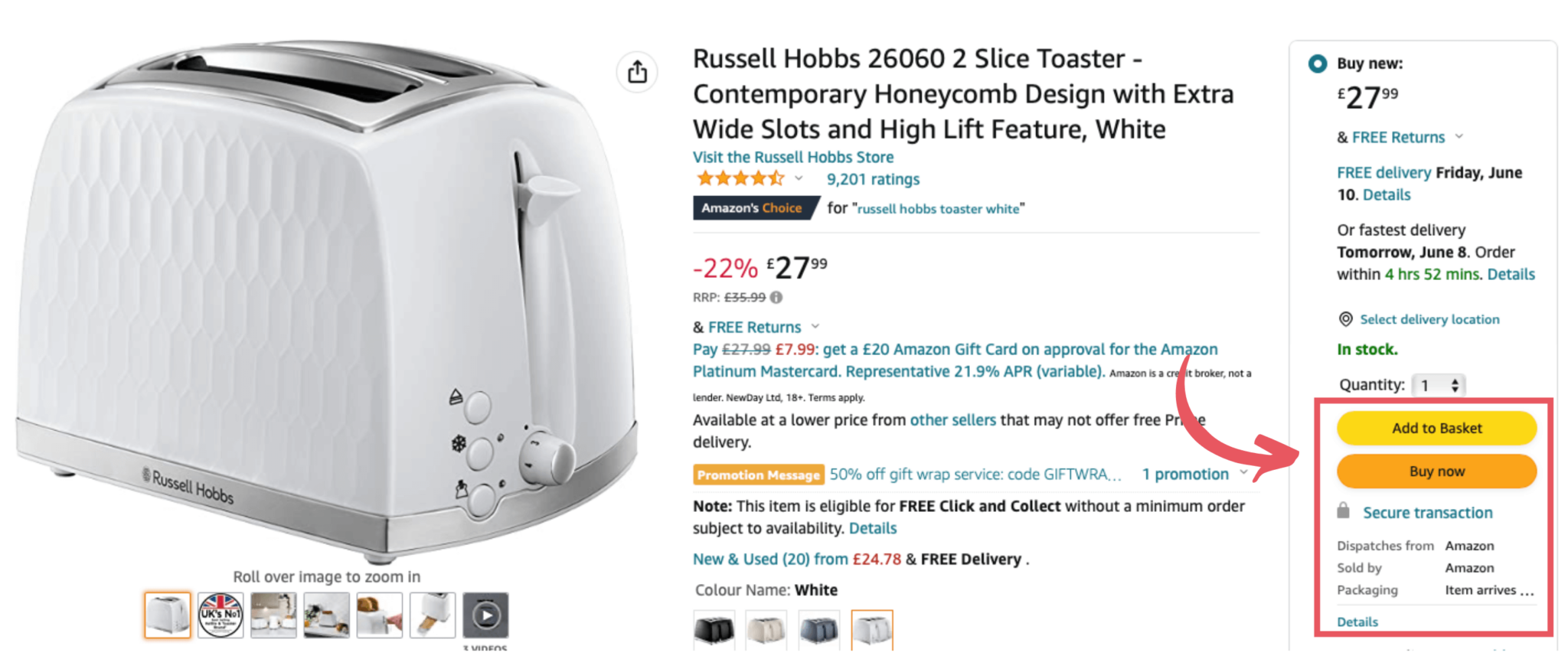
Mencionamos mucho la Buy Box de Amazon, ya que es, en cierto modo, el santo grial de los vendedores de Amazon. Pero, ¿qué es exactamente? Bueno, es la casilla que aparece en la página de un producto individual cuando un comprador busca un artículo.
El cuadro de compra aparece en la página de detalles del producto, lo que lleva al comprador a comprar el producto. Es la forma más rápida y sencilla de que un comprador compre en Amazon.
Por eso es tan importante ganar la Buy Box: aumenta la visibilidad de tu producto y hace más probable que consigas un mayor número de ventas. De hecho, El 82% de las búsquedas de productos en Amazon que se convierten en ventas se consiguen a través de la Buy Box. ¡Eso es muy significativo!
Como ya se ha dicho, ganar la Buy Box significa dominar el algoritmo de Amazon. Los factores que influyen en que tu producto gane la Buy Box incluyen:
- El precio: ¡Aquí es donde entra en juego el reprecio! El algoritmo de Amazon tiene en cuenta los precios del producto y del envío al seleccionar los productos para la Buy Box.
- Número de opiniones positivas: El número de reseñas positivas que tiene tu tienda de Amazon refleja lo fuerte que eres como vendedor. Las tiendas con un número más significativo de opiniones -y las que tengan más opiniones positivas- tendrán prioridad para la Buy Box.
- Tiempo de envío: Si un vendedor utiliza el servicio de Cumplimiento por Amazon (FBA), es más probable que obtenga una mejor puntuación en lo que respecta al envío, ya que los artículos que se envíen procederán de un centro de cumplimiento.
Hay muchos factores que están bajo tu control cuando se trata de optimizar tu tienda y tener éxito como vendedor en Amazon. La fijación de precios es uno de ellos y es un elemento crítico en la receta del éxito de Amazon, por lo que es sensato utilizar un software de fijación de precios.
El arte de fijar precios en Amazon
Poner precio a tus productos en Amazon es un delicado equilibrio de múltiples factores que influyen en cómo aparecen tus productos en el mercato. Un enfoque meditado de tu estrategia de precios contribuirá en gran medida a garantizar el éxito presente y futuro de tu negocio.
Estar al día de las estrategias de fijación de precios que favorece el algoritmo de Amazon puede ser un reto incluso para los vendedores más experimentados, pero un software de fijación de precios puede facilitar las cosas y hacerlas más rentables. Por eso el software de reajuste de precios debería estar en el kit de herramientas de todo vendedor.
Al implantar un software de reajuste de precios, das a tu tienda de Amazon la mejor oportunidad de llegar a múltiples clientes y tener éxito en el mercado a largo plazo.
Prueba gratis durante 14 días y descubre cómo Repricer puede revalorizar competitivamente tus productos para maximizar las ventas y mejorar tus beneficios.
